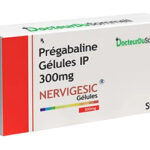Capsular contracture is the most common complication after breast implant surgery. It can happen in both cosmetic and reconstructive procedures. This situation may cause pain, breast firmness, and visible changes. Patients need to understand the causes of capsular contracture and consider these for both preventive and treatment measures.
In this article, we will highlight what capsular contracture after breast reconstruction is, the reasons it happens after reconstruction, its symptoms, the risk factors for capsular contracture, and what treatment options are available.
Why Does It Occur After Breast Reconstruction?
Capsular contracture after breast reconstruction usually occurs due to multiple risk factors. The processes of reconstruction and cosmetic augmentation are different. In reconstruction, the tissues have likely experienced more trauma, surgery, and possible radiation, which increases the risk of problems.
Typical Causes of Capsular Contracture
There are many reasons why capsular contracture may happen with breast reconstruction. Understanding the possible reasons may minimize the risk or even lead to early treatment.
1. Infection
Even minor infections can lead to inflammation. Inflammatory responses can vary in severity, and the body can create a capsule that thickens and tightens the scar tissue surrounding the implant.
2. Radiation Therapy
Many breast cancer patients undergo radiation therapy. Radiation can damage the soft tissue of the breast and/or limit blood supply. When you severely limit blood supply to the breast, healing and reducing initial scar formation become increasingly challenging.
3. Fluid Accumulation
Following surgery, some patients may feel fluid buildup or bleeding around the implant. This is often referred to as a seroma or hematoma. If ignored, this can result in an inflammatory reaction and capsule tightening.
4. Implant Position
Implants are all positioned differently. Implants under the muscle are likely to have less risk of developing a contracted capsule. During breast reconstruction procedures, surgeons tend to the side of under-the-muscle placement to lessen this risk.
5. Bacterial Contamination
A small amount of bacteria on the surface of the implant may invoke a reaction. This same bacteria creates a biofilm, which contributes to manifesting a chronic inflammatory reaction, which leads to capsular contracture after breast reconstruction.
Differences Between Reconstruction and Augmentation
Breast augmentation capsular contracture and breast reconstruction capsular contracture have common points of origin; however, the tissues involved in the reconstruction aspect are often much more fragile. The healing process is more complex with cancer treatment, radiation, and skin removal when performing breast reconstruction surgery. Thus, the chance of contracture after reconstruction is often greater.
Signs and Symptoms of Capsular Contracture After Breast Reconstruction
It is essential to be familiar with the signs and symptoms of capsular contracture after breast reconstruction. Early detection can result in enhanced management of the problem. These symptoms include:
- Hardness of the breast
- Change in shape or position
- The breast feels higher or uneven
Risk Factors to Review
Some patients are more at risk of developing this issue. Here are a few things that could raise the risk:
- If you have recently undergone radiation therapy.
- Previously, you had an infection in the breast.
- The person with a low immune system will be at high risk.
- Patients suffered from bleeding complications after surgery.
- If you have textured implants.
Can It Be Prevented?
Not all cases can be prevented, but there are steps you can take to reduce your risk for capsular contracture post breast reconstruction:
- Select an experienced surgeon
- Do not smoke
- Properly follow all post-operative care
- Treat infections and seromas (fluid collections) as soon as possible
- Select implants and placement that are appropriate
In some instances, surgeons may also employ specific surgical equipment or techniques that can help reduce later inflammation.
Treatment Options For Capsular Contracture
If contracture does occur, there are options to consider:
- Medications: These may help minimize inflammation in the early stages.
- Capsulotomy: The scar is cut to relieve pressure.
- Capsulectomy: The entire capsule is taken out, and the implant may be replaced.
- Fat grafting: Will sometimes involve adding fat to soften the area around the implant.
Your physician would recommend a treatment based on the stage of contracture and your general health.
Conclusion
Capsular contracture after breast reconstruction can be difficult, but it is treatable. It may have the same causes as breast augmentation capsular contracture, but the level of risk is often higher in reconstruction because of previous treatments (e.g., radiation). Recognizing the causes and acting early will help minimize the likelihood of long-term problems.
Always maintain a connection with your surgeon if you see any changes in your breast after surgery. If you are suffering from this problem, connect with Aspenaftersurgery. Their professional surgeons will help you get the best treatment.
- What Causes Capsular Contracture After Breast Reconstruction
- Capsular contracture after breast reconstruction is caused by excessive scar tissue forming around the implant, often due to infection, hematoma, or implant rupture.
- Capsular contracture after breast reconstruction
Related posts:
 Best Topical Finasteride & Minoxidil Spray for Hair Regrowth
Best Topical Finasteride & Minoxidil Spray for Hair Regrowth
 Expert Lung Care in Jaipur: Why You Shouldn’t Ignore Breathing Issues
Expert Lung Care in Jaipur: Why You Shouldn’t Ignore Breathing Issues
 Control Fasting Blood Sugar with Confidence – Get Glycomet Online Today
Control Fasting Blood Sugar with Confidence – Get Glycomet Online Today
 Effective Weight Loss Clinic Killeen: Your Path to Lasting Results
Effective Weight Loss Clinic Killeen: Your Path to Lasting Results
 How to Prepare for Your Appointment with the Best Plastic Surgeon in dubai for Fillers
How to Prepare for Your Appointment with the Best Plastic Surgeon in dubai for Fillers
 Comment les analgésiques sur ordonnance se comparent-ils aux options en vente libre ?
Comment les analgésiques sur ordonnance se comparent-ils aux options en vente libre ?
 How Massage Therapy Can Improve Your Health: A Guide for Queens Residents
How Massage Therapy Can Improve Your Health: A Guide for Queens Residents
 A Complete Guide on the Pricing of the Composite Bonding in London
A Complete Guide on the Pricing of the Composite Bonding in London







